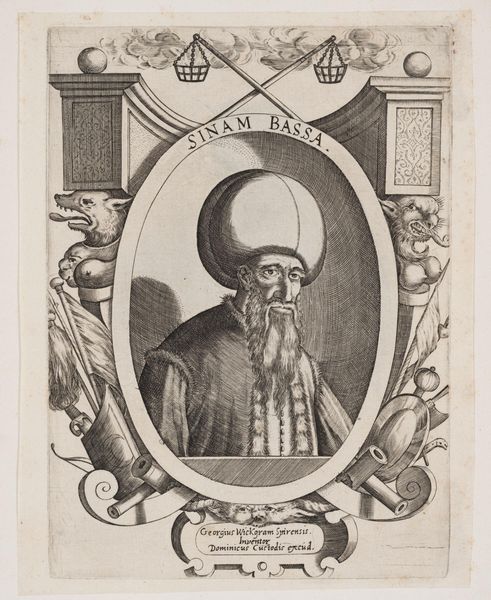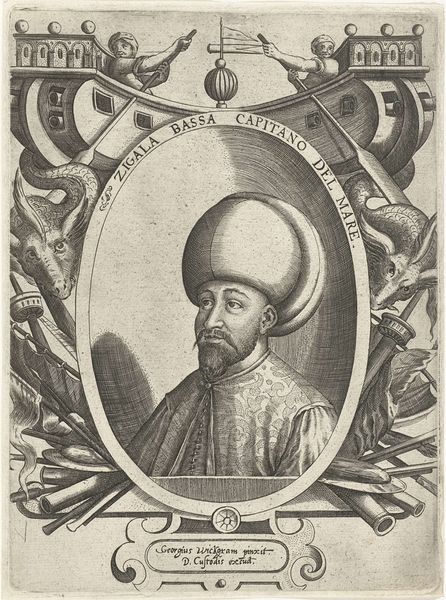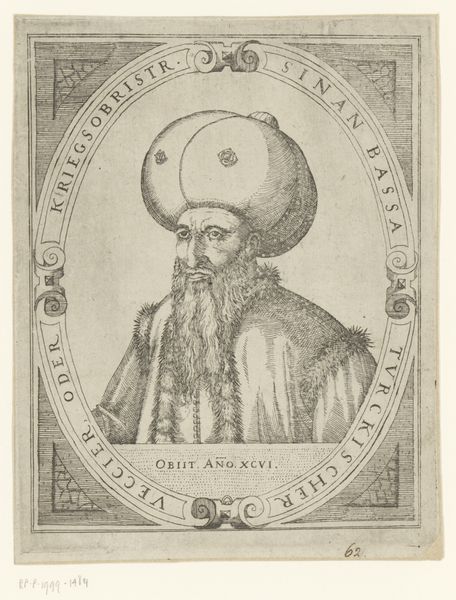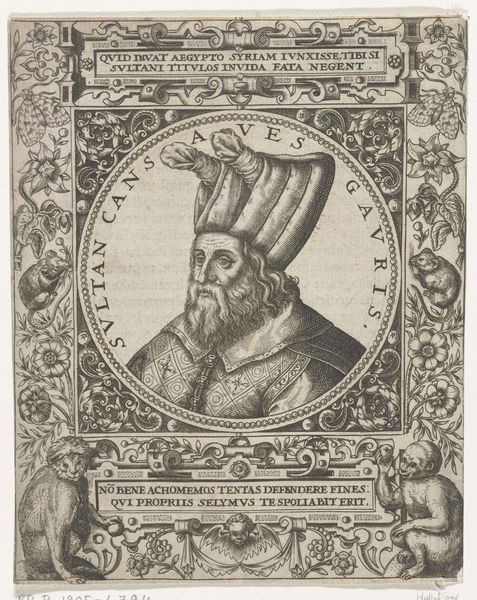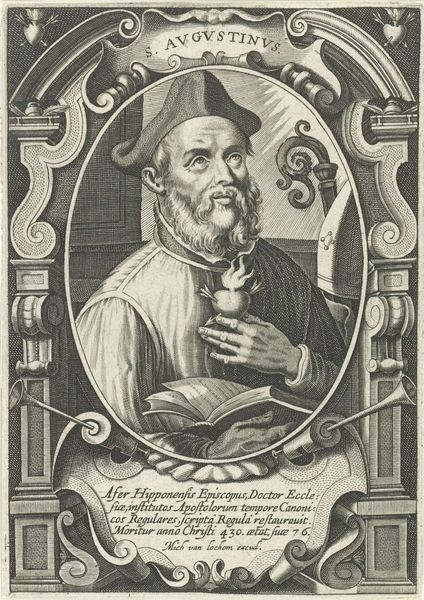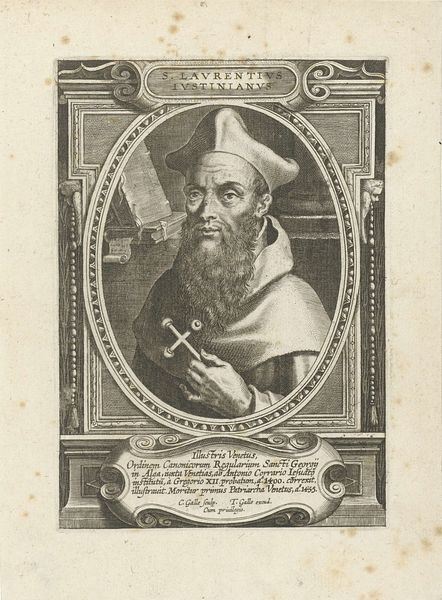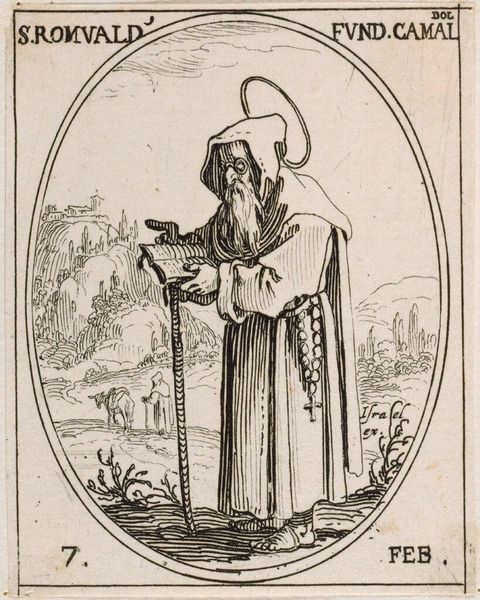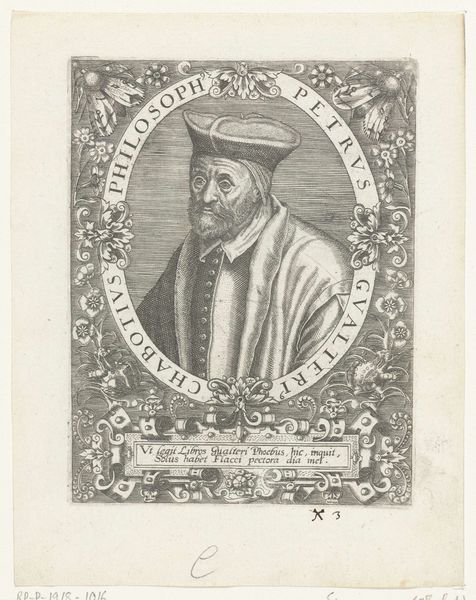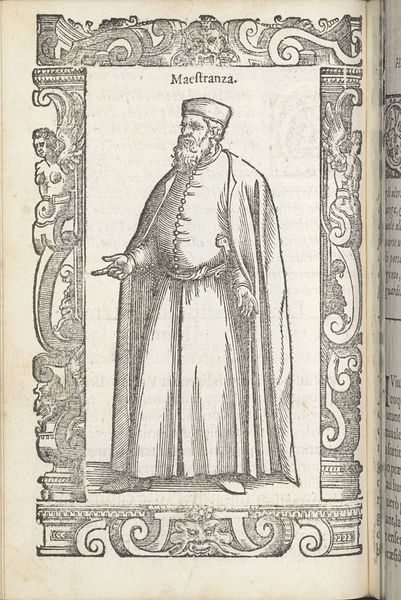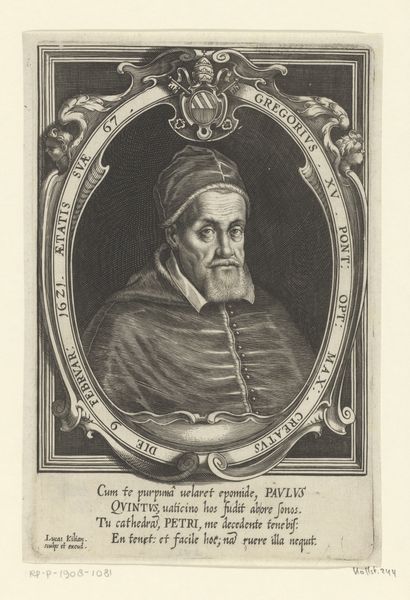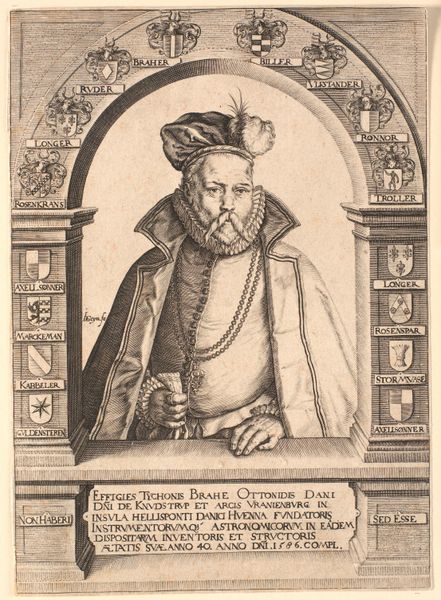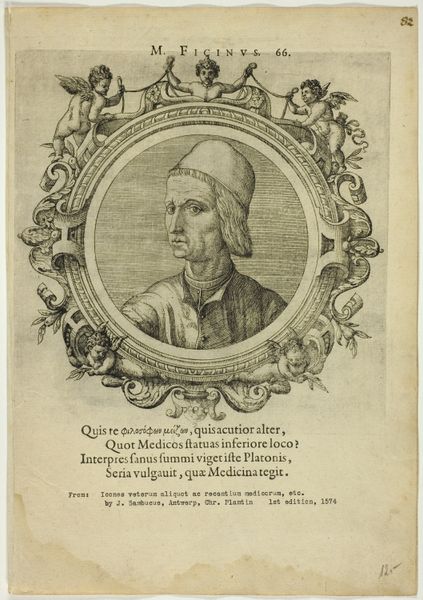
print, engraving
#
portrait
# print
#
caricature
#
11_renaissance
#
genre-painting
#
history-painting
#
engraving
Dimensions: height 197 mm, width 143 mm
Copyright: Rijks Museum: Open Domain
Curator: This is an engraving from sometime between 1579 and 1615, titled “Portret van Sinan Bassa,” or Portrait of Sinan Bassa. It's currently held at the Rijksmuseum. The portrait itself is credited to Dominicus Custos. Editor: My initial impression is one of imposing authority, though subtly undercut by caricature. The rendering of the face is almost clinical in its detail, yet the disproportionately large turban and somewhat monstrous figures flanking the portrait frame lean into the absurd. Curator: Precisely. The oversized turban serves not merely as a headdress, but as a visual marker of power and cultural identity, echoing similar depictions in Ottoman portraiture but here mediated through a European lens. Do the animalistic figures speak to any other meanings? Editor: Perhaps representing Europe’s complicated views toward the Ottoman Empire—fascination mixed with fear, maybe? This was a time of frequent conflict and negotiation, so the image probably appealed to certain orientalist fantasies or anxieties. The fact that the cannons are right there makes me feel like the portrait emphasizes these clashes more than a cultural sharing. Curator: I agree. It’s fascinating how the image appropriates and exoticizes in equal measure, building upon long traditions of emblem books and heraldic devices to broadcast symbolic intent. The scales hanging over Bassa’s head probably reinforce the concept of "balance" between the figures of the European framework to create continuity in values despite different cultures being shown. Editor: The composition is incredibly strategic, isn’t it? That oval frame really emphasizes a captured image, the cannon under him pointing upward almost threatening to escape! I think about our current media, with so many images circulating, and am wondering how such representations inform persistent biases even now. Curator: This print certainly captures the complex interplay of identity, power, and representation inherent in intercultural exchange. Thanks to prints like these, one could carry around a portable simulacrum of a distant figure, inviting commentary, conversation, and contemplation. Editor: Absolutely. Analyzing this piece has really shed light on the layered political meanings embedded within Renaissance portraiture—a history still relevant in our own visually saturated world.
Comments
No comments
Be the first to comment and join the conversation on the ultimate creative platform.
